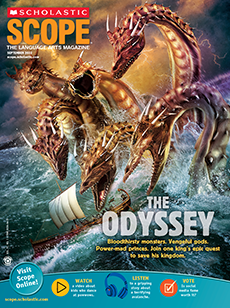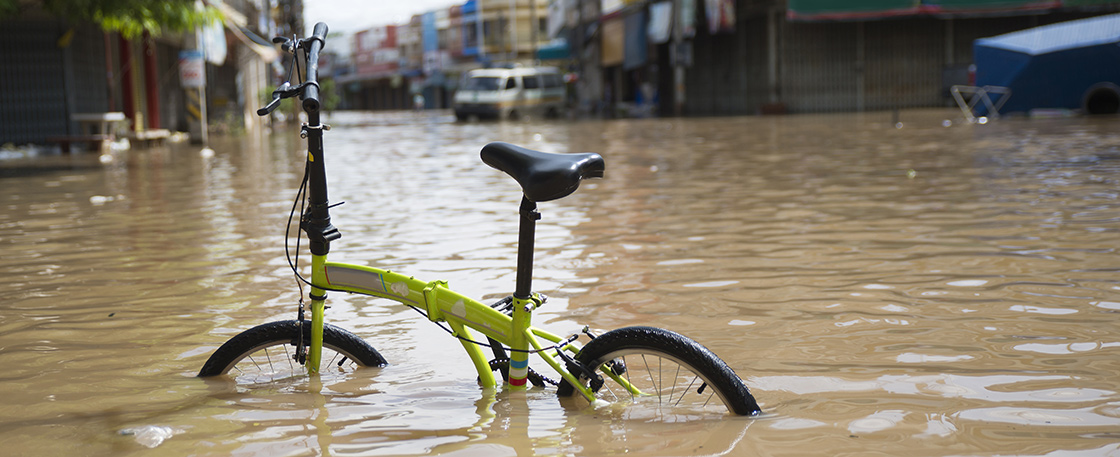Read and discuss the article. (45 minutes)
Read “ Our World Turned to Water ” as a class. Then have students work in groups to discuss the following questions.
Close-Reading Questions
- How is the introduction—the text in the light-brown box at the top of page 6—different from the rest of the article? What is the purpose of this introduction? (text structure, author’s purpose) The introduction is written in first person; the rest of the article is in third person. The purpose of the introduction is to tell readers what prompted the author to write the article and to introduce key people, places, and events.
- How does the author create suspense in the section “Dangerous Conditions”? (mood) Author Lauren Tarshis creates suspense by juxtaposing a description of the excitement inside Episcopal School on its orientation day with information about the dangerous storm outside and the flash floods that are about to occur. Tarshis explains why the storm was so dangerous and how deadly flash floods can be. She ends on the ominous note that “a major flooding disaster was taking shape.” Her description of the students and teachers as totally unaware of the impending disaster makes them seem vulnerable, which also adds to the suspense.
- Tarshis writes that “a ‘navy’ of volunteers had taken to the flooded streets in their own boats” (9). What is the likely reason she chose the word navy to describe the volunteers? What does navy help you understand about the volunteers? (word choice) A navy is a military force made up of ships. Tarshis likely chose the word navy to describe the volunteers because they were in boats; the word navy conveys that there were many volunteers who were organized and ready to battle the floodwaters.
- The caption “Fatal Floods” on page 7 states that flash floods are the most dangerous type of flood. What makes flash floods so dangerous? Draw on information in the article and in the sidebar “How to Stay Safe.” (key ideas and details) Flash floods are dangerous because they occur with little or no warning (7). They are particularly dangerous to people in vehicles because water can trap people inside (8), and once the water rises to the tops of the wheels, it can sweep the vehicle away (8; sidebar, 9).
- How did the Episcopal School community respond to the flood? Use text evidence. (key ideas and details) The Episcopal School community responded by coming together and helping one another. While the floodwaters were still high, volunteers used boats to rescue those who were stranded (9). In the days and weeks after the flood, people made donations and helped those whose homes had been damaged by cleaning, hauling away trash, and salvaging items that had survived (10).
Read and discuss the poem (15 minutes)
Play the audio of the poem “What We Know.” Invite students to share anything that they like or have questions about.
- Have students work in groups to complete the activity Poetry Analysis.
- Discuss the following questions as a class.
Critical-Thinking Questions (5 minutes)
- On page 10, Tarshis reports that the Botos family looks back on their experience “mainly with gratitude.” Do you think it could be hard to feel gratitude after an experience like theirs? Do you think it’s important to focus on the positive aspects of a difficult experience? Explain. Answers will vary. As to whether it’s important to focus on the positive, students might say that yes, it’s important, because that is the only way to recover and move forward with your life.
- On page 10, Mrs. Botos says, “We’ve gained so much more than we lost.” What do you think she means? What might she and her family have gained? Mrs. Botos may mean that her family gained a new appreciation for, and new friendships with, people in their community. Perhaps the family also gained an appreciation for each other and for their lives—an understanding that nothing should be taken for granted.
- What do you think the speaker of the poem means when he or she says that someone “offers a blueprint for tomorrow”? Who offers a “blueprint for tomorrow” in “Our World Turned to Water”? When the speaker says that someone “offers a blueprint for tomorrow,” he/she may mean that someone is giving disaster victims the help they need to make it to another day. This help may be practical—items like sandwiches, cots, and raincoats—or it may be in the form of support and encouragement, which the speaker refers to when he/she says someone “calls our names . . . unwrinkles the worry, smooths the sorrow.” In the article, those who donate supplies, time, and effort to their neighbors offer a “blueprint for tomorrow.”


